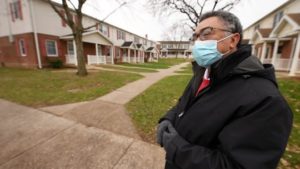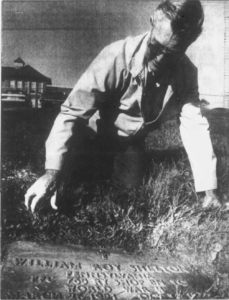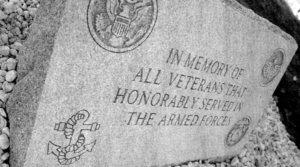Smallwoods arrive in York from Maryland
Smallwood School
West College & South Pershing Avenue, York
The situation
Rebecca Anstine combines the patience of a librarian, the curiosity of a historian and the laser focus of a family researcher in her history work. And the courage to write about her findings on public platforms. Her study of the Smallwood family – a 19th-century York family that spawned Black school teacher James Smallwood – brought together these skills. The following is a part of a larger story put forth by Anstine that focuses on James and his sister, Lydia, a Roman Catholic nun.
+++
The Joseph B. Smallwood family is known not only for its role in the history of York, but also in the history of California and Missouri. Wherever they lived, family members were interested in education, voting rights and public service.
The Smallwood family came from Maryland – possibly Emmitsburg in Frederick County. It has been said that Joseph’s father was a free man, but no information has been found to verify Joseph’s parentage. By 1840, Joseph has married Lydia (maiden name unknown), has 3 children and is living in the North Mulberry Ward of Philadelphia, PA. The 1847 African American Census of Philadelphia shows that Joseph is employing 2 tailoresses (sic), shirt and dressmaker and 2 apprentices. The census gives more information about the residents living in the household. Nine are males, 4 are female, three are under the age of five, two are under the age of fifteen, and 8 are under 50. Ten are natives of the state and three are not natives. Ten people can read and three can write. Three attend the Adelphi school.
In the 1850 (August 19, 1850) census of Philadelphia, the Smallwood family is listed as mulatto. Joseph is a barber (age 37), Lydia (32) – both born in Maryland. Their children: Mary Ann (11), Joseph (9), James (8), Lydia (6), William (5), John (2) and George (4 months) were all born in Pennsylvania. Also living in the household is Margaret Smallwood (25, born in Maryland), Robert Trulie (19, barber, born in Pennsylvania), Joseph Henderson (25, barber, born in Massachusetts) and Harriet Henderson (19, born in Massachusetts).
Between 1850-1858, the family moved to York, York County, Pennsylvania. Joseph remained there long enough to get his family settled. Joseph B. was listed in the 1860 census in York Division 1 on 28 June 1860. Lydia (age 40), Lydia (16), William (14), John (10), Joseph C. (19) and James (17). George does not appear in the census.
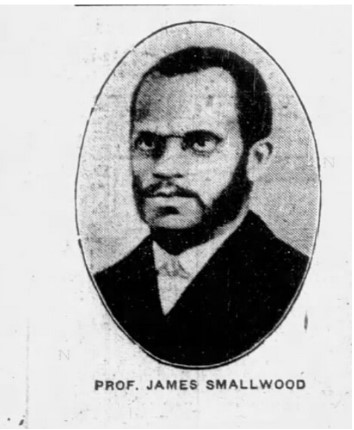
The witness
Both Joseph B. and Joseph C. are also listed on the 1860 census on Aug 17, 1860, in Coloma, El Dorado County, California, as barbers. James Smallwood was also listed as a barber living in Georgetown, El Dorado County, California, in 1860 (July 27, 1860). According to a synopsis of Joseph B.’s life – he was in California as early as October 1850, having served as a steward on the ship George Washington. Joseph B. served as a delegate from San Francisco in 1865, at a convention for establishing committee on education and voting rights for colored citizens. He had come to California to work in the mines but returned to being a barber until his death. He died on July 6, 1880, and is buried in the Odd Fellows Cemetery in Santa Cruz County, California. His death announcement noted that he was “subject to fits, having had at least seven during his lifetime and that his mother and one of his sisters died while in fits.”
It is possible that Lydia included her sons and husband in the 1860 census as a way to ensure that they were counted. After 1860, with the exception of James L. Smallwood, his sister, Mary A.C. Grey and his mother, Lydia, the rest of the family vanishes from York records. A brief biography of James Smallwood mentions that one of his sisters became a nun and a brother was a private secretary to Supreme Court Justice Salmon P. Chase – neither was named in the article.
Mary, the eldest child, was born on Aug 1, 1840. On May 30, 1858, Mary A. C. Smallwood married Hamilton Grey. In 1860, the Greys were living in Minneapolis, Hennepin Co., Minnesota, along with members of the William C. Goodridge family. Hamilton’s sister, Rhoda had married Glenalvin J. Goodridge, son of William C. and Evalina Goodridge. Hamilton was a barber and Mary became a hairdresser. Two children were born: Joseph W Grey and Hamilton William Grey. By 1870, the couple had separated and or divorced; Hamilton remained in Minnesota, with a new wife and daughter. Mary and her two sons returned to York to live with her mother. Both Joseph and his brother, Hamilton Jr., were involved with the Banneker Literary Society in York. Joseph was involved in the newspaper business, published a monthly publication in York with C. Mead, called the “International Times. Joseph moved to Philadelphia and became a newspaper editor and manager. He died on Feb. 3, 1932 in Philadelphia and is buried in Lebanon Cemetery, York, Pennsylvania. Hamilton Grey, Jr., died after suffering a stroke. He was a pie merchant at the Northern Central and Western Maryland Railroad depots and is also buried in Lebanon Cemetery.
Joseph C. Smallwood was born around 1841 in Philadelphia. In 1860, he was living with his father, Joseph B. Smallwood in El Dorado County, California. The 1870 census found him living in Allegheny Ward 3, Allegheny County, Pennsylvania, in the household of Dudley Asbury. In 1880, he was living in Olean, Cattaraugus County, New York, in the household of Thomas H Barnes. His occupation through the years was listed as barber or hairdresser. By 1886, Joseph has settled in St. Louis. He died there on June 4,1888 and was buried in Calvary Cemetery and Mausoleum, St. Louis.
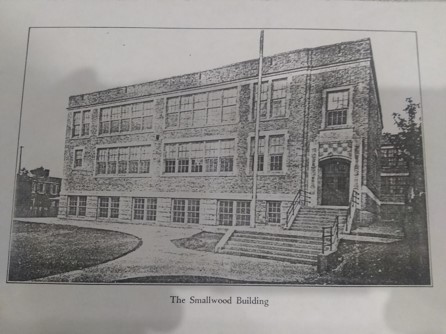
James L. Smallwood was born on July 28, 1844 in Philadelphia. His obituary said that he had started his education in the schools there, but when he was ten years old, he was sent to the Government Schools in Buxton, Canada West. The Buxton School had been founded in 1849 by the Rev. William King, who had become a reluctant slave owner in Louisiana. Unable to free his slaves, he moved them to Canada and founded a community with a school for the purpose of educating fugitive slaves and free Blacks. James attended the Buxton school for 3 years and then returned to Philadelphia where he graduated from the Institute for Colored Youth (now Cheney University). The Institute was founded in 1837 by a bequest from Quaker philanthropist, Richard Humphreys for the purpose of educating African Americans to become teachers. After graduation, James worked for the government as a clerk at Camp Chilton, near Philadelphia. In 1867, he became a teacher in York. From 1868-1877, he continued to be listed in city directories as a barber. In 1879, he became the first Black juror in York County. According to his obituary, he drew illustrations on the blackboard when he was teaching Sunday School lessons. He was well respected, and it was felt that he would be deeply missed by all who knew him. So well respected was James, that in 1892, a school was named after him. In 1931, the Smallwood School became part of the York City School District. There is now a historical marker at the site of the school on South Pershing Ave. James Smallwood was buried in Lebanon Cemetery, North York, York County.
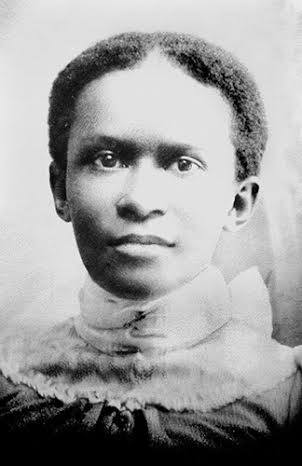
In 1886, after the death of James, a deed was recorded in York County, providing information about his siblings; which led to locating them and discovering their stories. The deed was signed by the brothers and sisters of James Smallwood, in which they signed over their shares of a property on N. Duke St. owned by James, to their mother – Lydia Smallwood. It listed the following brothers and sisters of James: John H. and wife, Rose Smallwood, of Pittsburgh, Joseph C. Smallwood and Lydia Smallwood of St. Louis, and Mary A.C. Grey of York. With this information, it became possible to trace these family members, and we’ll tell about one sister here.
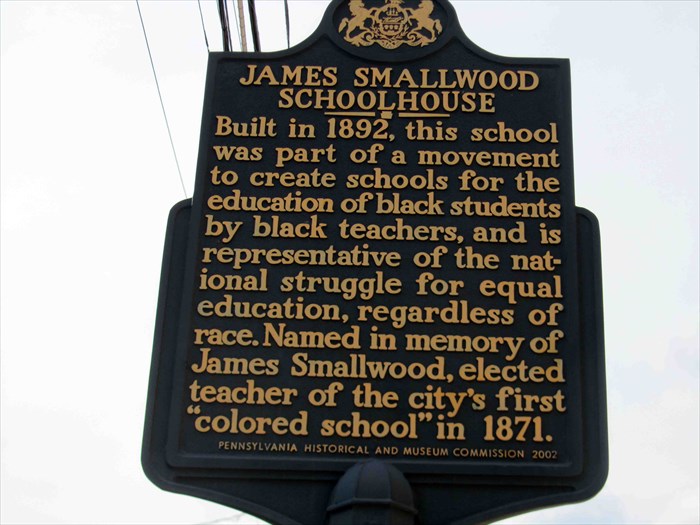
On May 30, 1858, Lydia Smallwood took her first communion at the St. Francis Academy in Baltimore. St. Francis Academy was operated by the Oblate Sisters of Providence. Lydia was one of several children from the African American families of York to attend the academy. Another student was Mary A. Goodridge, daughter of William C. and Evalina Goodridge. Mary sent a photograph of herself in later years as a thank you to the Oblate Sisters of Providence in Baltimore. The Goodridges lived in York on East Philadelphia Street – just around the corner from the Smallwood family. Both the Smallwood and the Goodridge families married into the Hamilton Gray family – which was also from Baltimore and resided on Duke Street – next to the Smallwoods.
An entry made on February 10, 1864, in the Oblate’s archives, stated that “Lydia Smallwood, one our former pupils for years has been wanting to become a sister but as she was under the age and could not obtain the consent for her mother had to wait until she was 18 years old. She arrived today and will soon commence her candidateship.” The Archive Records record that on June 8, 1866, Lydia was one of three postulants who became novices. The Rev. Director blessed the habits and gave them to the novices. The novices were then named: Sr. Mary Gertrude (Lydia Smallwood), Sr. Mary Virginia and St. Mary Bernard.
The Oblate Sisters of Providence had been established in Baltimore in 1828 for the purpose of educating Black Catholic girls. Not only were the girls taught to read and write, but fine arts, needlework, writing, French, English, Writing, Geography, religious education, etc. were included in the curriculum. The school consisted of boarders, day scholars and orphans.
On December 24, 1866, a request was received from Monsignor Odin of New Orleans. Three sisters were appointed to be sent to New Orleans to assist with the orphanage: Sr. Victoria Meissonier (as Superior), Sr. Gertrude Smallwood, and Sr. Bernard Atkins. Prior to their departure, the sisters were given a tour of the ship, the Steamship Liberty. An article in the Baltimore Sun described the departure of the ship – listing its cargo, ports of call and passengers. Their mission was to take charge of an orphanage that was to be opened. Archive records report that on November 7, 1867, Mother Louisa made a trip to New Orleans to bring back Sr. Gertrude. The mission had had to be closed due to finances, “several trials and humiliations” in addition to “displays of prejudice”.
Sister Gertrude remained in Baltimore for the next several years. Archive records report that on August 27, 1873, she assisted in giving music lessons. On Sept 4, 1874, she was assigned to teach. On June 2, 1876, Sr. Gertrude was to assist Sr. Theresa Superior as Mother Louisa was in ill health and was to rest until September. Sister Gertrude was listed as a schoolteacher at St. Frances Academy for Colored Girls in Baltimore in the 1880 census.
In 1880, the Rev. Father Pinken, S.J came to the Oblate Sisters in Baltimore with a request – “would the Order send several sisters to St. Louis, Missouri to help establish a school and orphanage for a growing congregation?” The Rev. Pinken had a house with 50 students already enrolled. Three sisters accepted the call: Sister Dominica Thomas, Sister Gertrude Smallwood and Sister Evangelista Livingston. By 1912, Sister May Gertrude Smallwood was in charge of the boarding school.
Sister Gertrude remained in St. Louis until her death. She died on April 21, 1895, and was buried in Calvary Cemetery and Mausoleum in St. Louis.
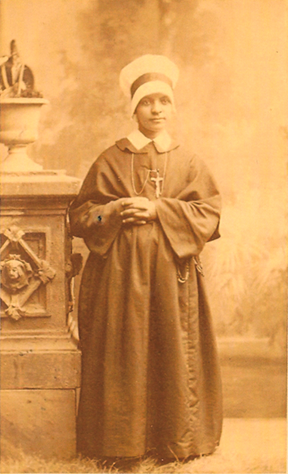
The questions
Students of history have many tools to develop and use, as researcher Rebecca Anstine has done. The emphasis is on “develop” because not everyone is blessed with, say, curiosity, patience or writing skills. Curiosity, for example, can be developed by reading. And then more reading. On a variety of subjects. What are your strengths as a researcher? What tools do you need to work on?
Related links and sources: A sample of Rebecca Anstine’s past scholarly work can be founding in several issues of the Journal of York County Heritage. She used many sources for this piece, including U.S. Census records, Oblate Sisters’ records, newspaper accounts and John J. Jiezierski’s “Enterprising Images.” When this piece gains scholarly publication, we’ll include a link to that piece and its footnotes. Photos: York Daily Record, except photo of Sister Gertrude, which comes from the Oblate Sisters.
— By JAMIE NOERPEL and JIM McCLURE

